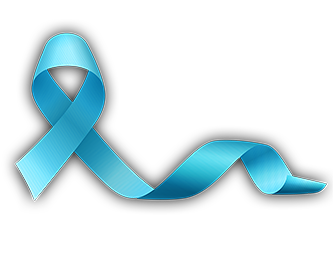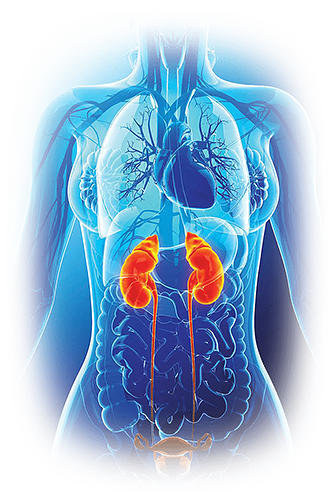Login
For Clinician Providers
For Clinician Providers
For Patients
September is National Cholesterol Education Month
Children, young adults and older Americans can have high cholesterol. Learn how to prevent high cholesterol and know what your cholesterol levels mean
September is National Cholesterol Education Month, a good time to get your blood cholesterol checked and take steps to lower it if it is high. National Cholesterol Education Month is also a good time to learn about lipid profiles and about food and lifestyle choices that help you reach personal cholesterol goals. Below you will find some information about cholesterol and a summary of CDC programs that address cholesterol across the country. You will also find a few fact sheets and publications about cholesterol, as well as links to useful consumer and health care provider information on our partner Web sites.
How many Americans have high cholesterol?
More than 102 million American Adults (20 years or older) have total cholesterol levels at or above 200 mg/dL, which is above healthy levels. More than 35 million of these people have levels of 240 mg/dL or higher, which puts them at high risk for heart disease.1
What is cholesterol?
Cholesterol is a waxy, fat-like substance found in your body and many foods. Your body needs cholesterol to function normally and makes all that you need. Too much cholesterol can build up in your arteries. After a while, these deposits narrow your arteries, putting you at risk for heart disease and stroke.
How do you know if your cholesterol is high?
High cholesterol usually doesn’t have any symptoms. As a result, many people do not know that their cholesterol levels are too high. However, doctors can do a simple blood test to check your cholesterol. High cholesterol can be controlled through lifestyle changes or if it is not enough, through medications.
It’s important to check your cholesterol levels. High cholesterol is a major risk factor for heart disease, the leading cause of death in the United States.
How often should you have your cholesterol checked?
The National Cholesterol Education Program (NCEP) recommends that adults aged 20 years or older have their cholesterol checked every 5 years.
Preventive guidelines for cholesterol screening among young adults differ, but experts agree on the need to screen young adults who have other risk factors for coronary heart disease: obesity, smoking, high blood pressure, diabetes, and family history
Less than half of young adults who have these risk factors don’t get cholesterol screening even though up to a quarter of them have elevated cholesterol. 6
A simple blood test called a lipoprotein profile can measure your total cholesterol levels, including LDL (low-density lipoprotein, or “bad” cholesterol), HDL (high-density lipoprotein, or “good” cholesterol), and triglycerides.
The following chart shows optimal lipid levels for adults 4:
| Desirable Cholesterol Levels | |
| Total cholesterol | Less than 170 mg/dL |
| Low LDL (“bad”) cholesterol | Less than 110 mg/dL |
| High HDL (“good”) cholesterol | 35 mg/dL or higher |
| Triglycerides | Less than 150 mg/dL |
Can children and adolescents have high cholesterol?
Yes. High cholesterol can develop in early childhood and adolescence, and your risk increases as your weight increases.2 In the United States, more than one-fifth (20%) of youth aged 12–19 years have at least one abnormal lipid level.3 It is important for children over 2 years of age to have their cholesterol checked, if they are overweight/obese, have a family history of high cholesterol, a family history of heart disease, diabetes, high blood pressure, or certain chronic condition (chronic kidney disease, chronic inflammatory diseases, congenital heart disease, and childhood cancer survivorship.4
The National Cholesterol Education Program External has developed specific recommendations about cholesterol treatment for people at increased risk, such as those with a family history of high cholesterol or heart disease.
If you have high cholesterol, what can you do to lower it?
Your doctor may prescribe medications to treat your high cholesterol.5 In addition, you can lower your cholesterol levels through lifestyle changes:
- Low-fat and high-fiber food (Eat more fresh fruits, fresh vegetables, and whole grains).
- For adults, getting at least 2 hours and 30 minutes of moderate or 1 hour and 15 minutes of vigorous physical activity a week. For those aged 6-17, getting 1 hour or more of physical activity each day.
- Maintain a healthy weight.
- Don’t smoke or quit if you smoke.
CDC Programs That Address Cholesterol
National Heart Disease and Stroke Prevention Program
Since 1998, CDC has funded state health departments’ efforts to reduce the number of people with heart disease or stroke. Health departments in 41 states and the District of Columbia currently receive funding for these activities. These programs promote policy and system level changes at the state and community level to support heart-healthy and stroke-free living and working conditions.
WISEWOMAN
The WISEWOMAN program helps women with little or no health insurance reduce their risk for heart disease, stroke, and other chronic diseases. The program helps women aged 40 to 64 years quit smoking, improve their diet, and increase physical activity. WISEWOMAN also offers tests for high blood pressure, high cholesterol, and diabetes. CDC funds 21 WISEWOMAN projects in 19 states and two tribal organizations.
Lipid Standardization Program
CDC’s Environmental Health Laboratory serves as the world reference laboratory for measuring cholesterol, triglycerides, high-density lipoproteins, and low-density lipoproteins. Doctors require accurate measurements to diagnose and properly treat people with high cholesterol levels. The laboratory helps ensure the quality of about 35 million cholesterol measurements made annually in the United States.
Cholesterol Resources
- CDC’s Cholesterol Web Site
- Cholesterol Fact Sheet
- State Heart Disease and Stroke Prevention Programs Address High Blood Cholesterol
Other Cholesterol Resources
- Trends in Cholesterol Screening and Awareness of High Blood Cholesterol—United States, 1991–2003. MMWR—Morbidity and Mortality Weekly Report. September 2005.
More Information
- Cholesterol Education Month Web Site of the National Heart, Lung, and Blood Institute
- National Cholesterol EducationProgram
- The American Heart Association
References
- American Heart Association. Heart Disease and Stroke Statistics—2010 Update. Available on the American Heart Association Web site.
- Dai S, Fulton JE, Harrist RB, Grunbaum JA, Steffen LM, Labarthe DR. Blood lipids in children: age-related patterns and association with body-fat indices: Project HeartBeat! American Journal of Preventive Medicine. 2009;37(IS):S56–S64.
- Centers for Disease Control and Prevention. Prevalence of abnormal lipid levels and eligibility for therapeutic lifestyle counseling among youth—United States 1999–2006. MMWR—Morbidity and Mortality Weekly Report. 2009;[vol.#:[inclusive page numbers].
- Daniels, SR, Greer, FR, the Committee on Nutrition. Lipid Screening and Cardiovascular Health in Childhood. Am J Ped 2008; 122(1): 198-208.
- National Cholesterol Education Program. Executive Summary of the Third Report of the National Cholesterol Education Program (NCEP) Expert Panel on Detection, Evaluation, and Treatment of High Blood Cholesterol in Adults (ATP III). Available on the National Heart, Lung and Blood Web site at: https://www.nhlbi.nih.gov/guidelines/cholesterol/
- Annals of Family Medicine. Prevalence of Coronary Heart disease Risk Factors and Screening for High Cholesterol Levels Among Young Adults, United States, 1999–2006. Ann Fam Med 2010 8: 327-333
- https://www.cdc.gov/cholesterol/cholesterol_education_month.htm



